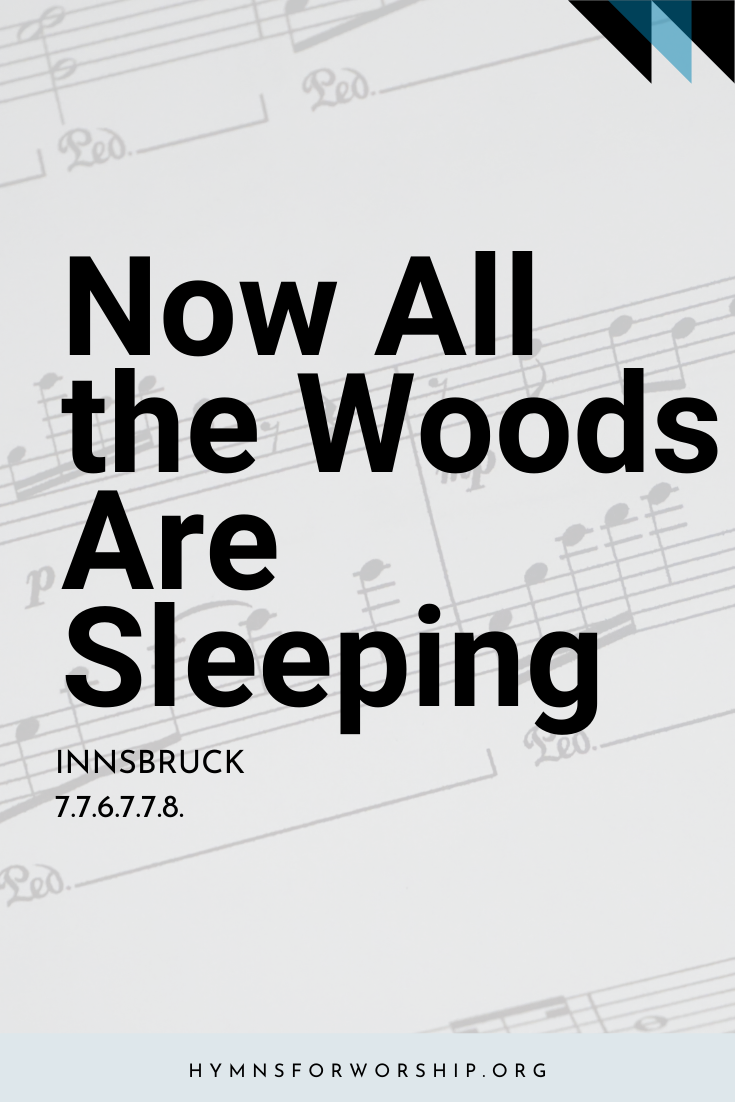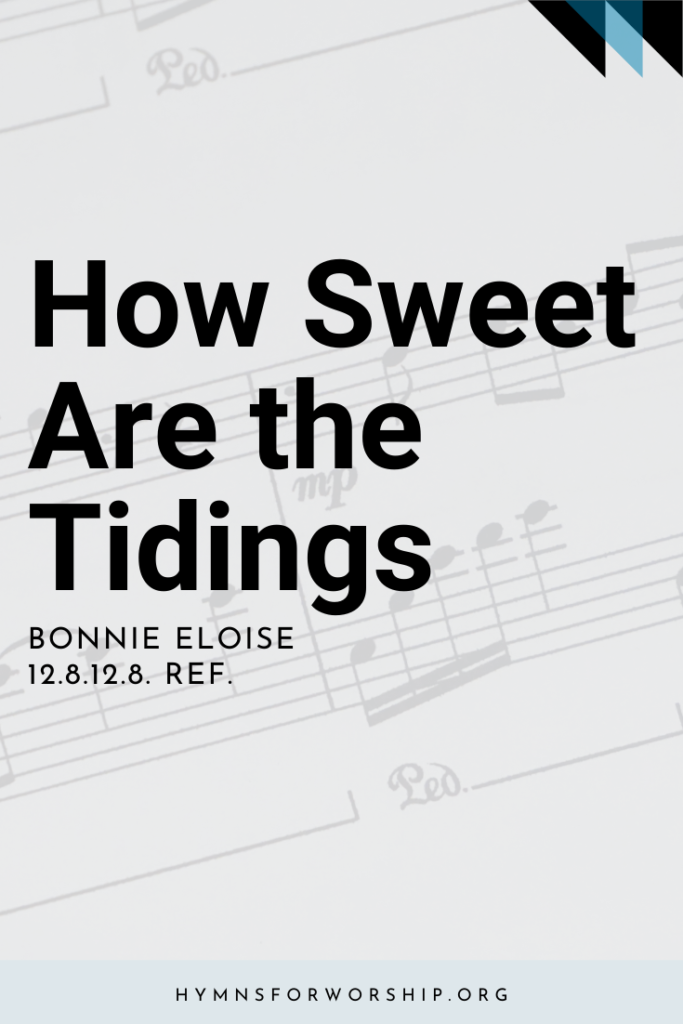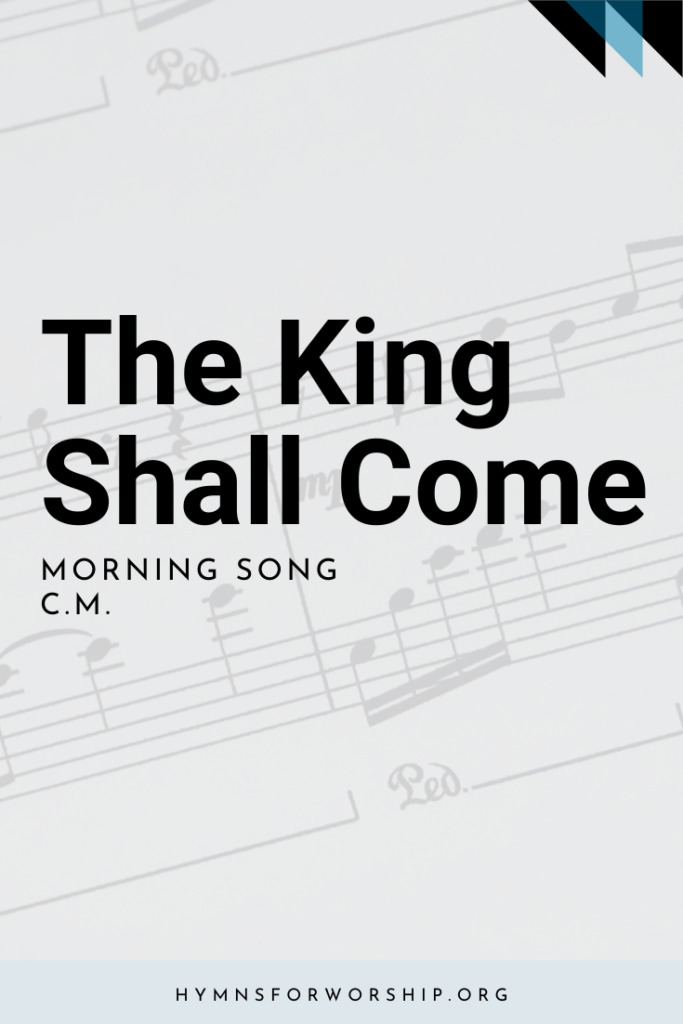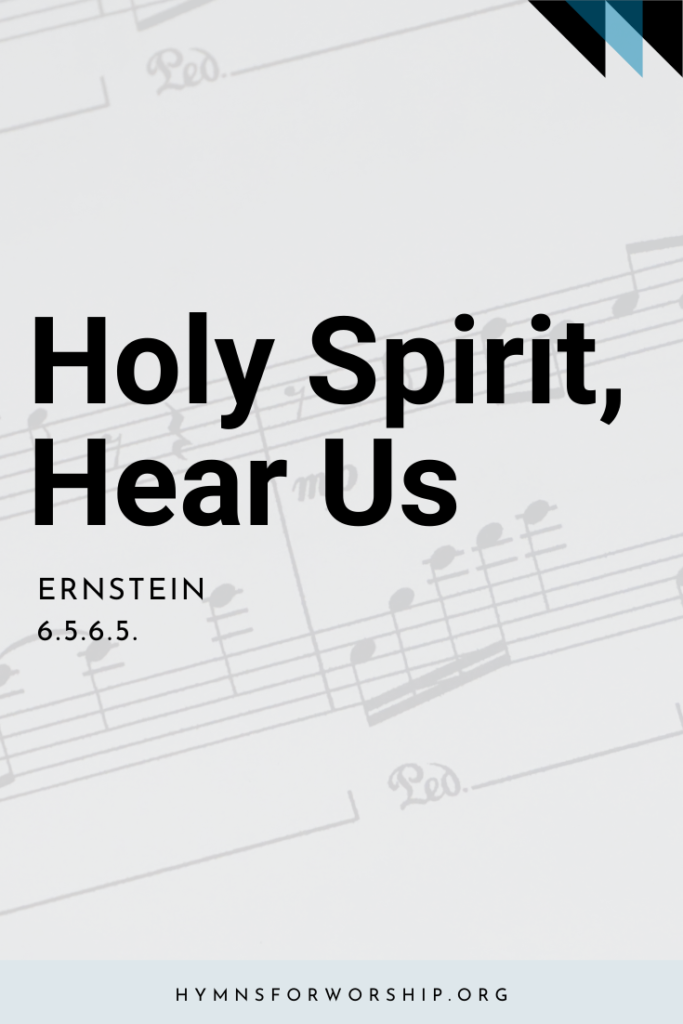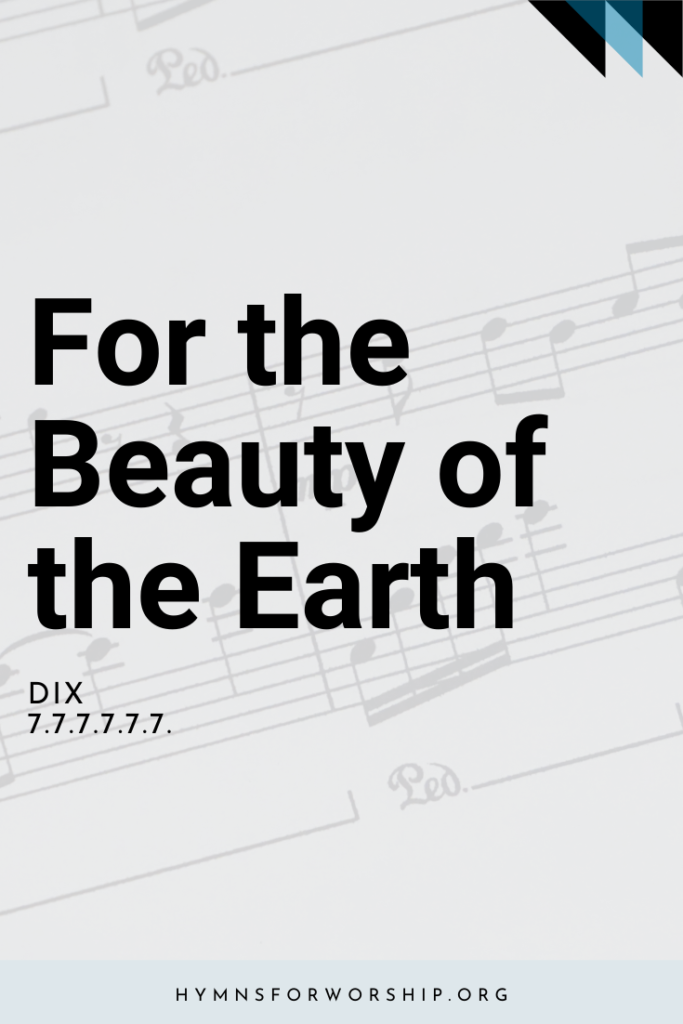WORSHIP >> EVENING WORSHIP
SDAH 57
Now all the woods are sleeping,
And night and stillness creeping
O’er city, man, and beast;
But thou, my heart, awake thee,
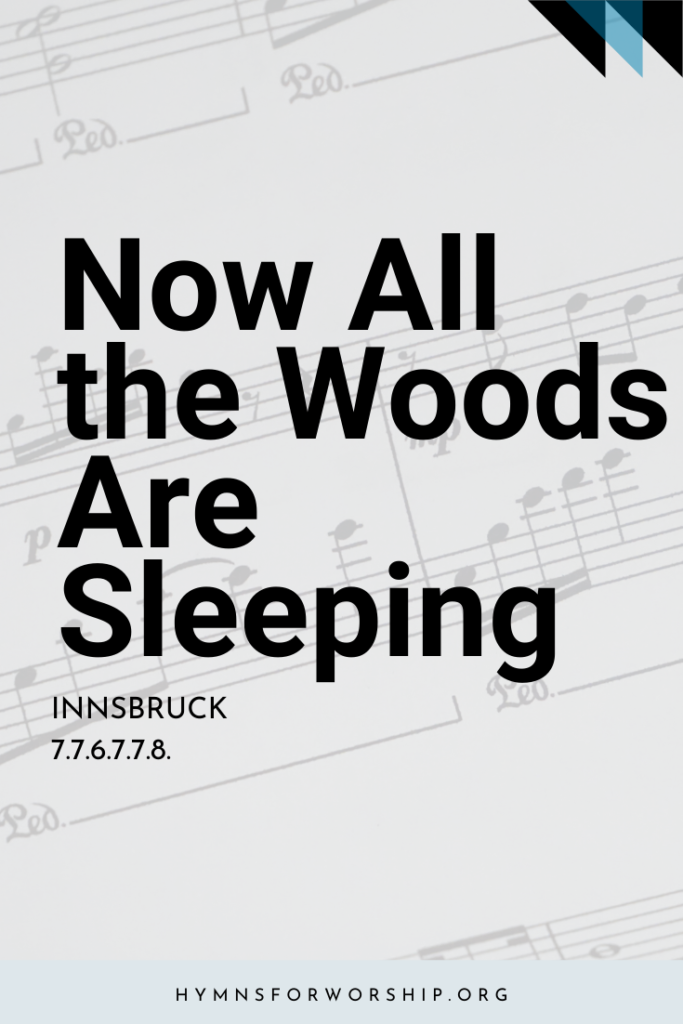

Text
1
Now all the woods are sleeping,
And night and stillness creeping
O’er city, man, and beast;
But thou, my heart, awake thee,
To pray’r awhile be take thee,
And praise thy Maker ere thou rest.
2
My Jesus, stay Thou by me,
And let no foe come nigh me,
Safe sheltered by Thy wing;
But would the foe alarm me,
O let him never harm me,
But still Thine angels round me sing!
3
My loved ones, rest securely,
From every peril surely
Our God will guard your heads;
And happy slumbers send you,
And bid His hosts attend you,
And golden armed watch o’er your beds.

Hymn Info
Biblical Reference
(a) Ps 3:5 (b) Ps 34:7 (c) Ps 121:5
Author
Paul Gerhardt (1607-1676)
Translator
Catherine Winkworth (1829-1878)
Hymn Tune
INNSBRUCK
Metrical Number
7.7.6.7.7.8.
Composer
Attr. to Heinrich Isaak (c. 1450 – c. 1527)
Arranger
J.S. Bach (1685-1750)
Theme
EVENING WORSHIP
Hymn Score
Piano Accompaniment
Recommended Reading
The general idea when it comes to hymns is that there is a close bond between the author and the composer. That the author writes a hymn and the composer invents a tune to suit it, and then provides the harmony to accompany the tune. However, such wasn’t always the case.
Many hymns actually worked vice versa wherein authors would write verses according to existing tunes. Hundreds of hymns are sung from borrowed tunes, such as secular songs, chants, and even classical works. That being said, I went ahead and researched which hymns in the SDA Hymnal were originally classical works.

Notes
Get to know the hymns a little deeper with the SDA Hymnal Companion. Use our song leader’s notes to engage your congregation in singing with understanding. Even better, involve kids in learning this hymn with our homeschooling materials.
Here are stanzas 1, 8, and 9 of the nine stanzas written by Paul Gerhardt (1607-1676; see Biographies) and first published in the 1648 edition of Johann Crüger’s Praxis Melica. It is considered one of the finest of Gerhardt’s hymns and was a favorite of the German poet Johann Schiller. John Julian record the words of Baron Bunsen in Evangelische Kirkenzeitung, 1830: “Ever since its publication this hymn has been one of the most loved and best-known hymns of devout meditation over the whole of Germany. Experienced and conceived in a truly childlike popular spirit, it unites with a rare, naive simplicity of expression, a loftiness of thought, a depth of Christian experience, a grace of poetry, so that for this union of qualities it must rank as an enduring masterpiece among hymns.” It was often sung by children as their prayer before going to bed. The Yattendon Hymnal, 1899, included English poet Robert Bridges’ paraphrase “The Duteous Day Now Closeth.” The SDAH translation by Catherine Winkworth (1827-1878; see Biographies) was printed in her Lyra Germanica, second edition, 1856.
Paul Gerhardt wrote more than 120 hymns, most of which immediately became popular; a quarter of them are still favorites in Germany today. Born March 12, 1607, near Wittenberg, he was orphaned in early childhood. He attended the University of Wittenberg, planning to become a Lutheran minister, In 1642 he went to Berlin and was the tutor for the daughter of an advocate. After ordination as a Lutheran pastor in 1651, he married his former pupil and moved to Lubben, south Berlin.
His life was a sad one, even apart from the fact that he lived during the Thirty Years’ War (1618-1648), for four of his five children died in infancy and his wife died following a long illness after only 13 years of marriage. He had been deposed from his position because of a conflict between the elector of the Reformed Church and the Lutheran clergy in 1666, but after two years without employment he was appointed archdeacon at Lubben, holding this position until his death May 27, 1676.
In spite of his bereavements, disappointments, and sorrow, his faith and trust in God remained unshaken, and his hymns reveal a remarkable confidence in his heavenly Father. They are mostly introspective and echo the feelings of many Christians, which accounts for their great popularity then and now. Gerhardt also translated from the Latin SDAH 156, “O Sacred Head Now Wounded,” and wrote SDAH 519, “Give to the Winds Your Fear.”
INNSBRUCK means “bridge over the Inn River.” The name comes from a fifteenth-century German folk song, “Innsbruck, I Must Leave Thee.” Isaak’s arrangement was printed in George Foster’s Ein Auszug guter alter und neuer Teutschen Liedlein, 1539 (A Selection of Good Old and New Songs), where the melody had a little different form. O WELT ICH MUSS DICH LASSEN (O World, I Must Leave Thee) is another name for this tune, taken from the first line of a hymn by Johann Hess, often used with this music.
Heinrich Isaak, born about 1450 in the Netherlands of Germany, was an international composer and music personality whose work was admired by Martin Luther. From 1477 to 1493 he served as organist at the Medici Chapel, Florence, Italy, and was a tutor for the children of Lorenzo the Magnificent, one of whom later became Pope Leo X. Then for 18 years he was chapel master to Emperor Maxmillian I at Innsbruck. His compositions include Choralis Constantinus (musical settings of the service for the entire church year), which Albert Einstein called “one of the greatest documents not only in the history of music but also in the history of art.”
He also wrote masses, motets, sacred and secular songs, and instrumental music. He was prolific and wrote in all the musical styles prevalent in his day. In Italy he was known as “Henry the German.” The place and date of his death are uncertain; some say Rome in 1527, others Florence in 1517.
J.S. Bach (1685-1750; see Biographies) liked this tune well enough to use it in both the St. Matthew Passion and the St. John Passion and in cantatas 13, 44, and 97. SDAH uses his harmonization from the first version in the St. Matthew Passion, only a half step lower. There are 12 different versions of this fine choral in Charles Sanford Terry’s Four-Part Chorals of Johann S. Bach. Johannes Brahms employed it in his Chorale Preludes, Opus 122, Nos. 3 and 11; the latter in thought to be his final composition.

